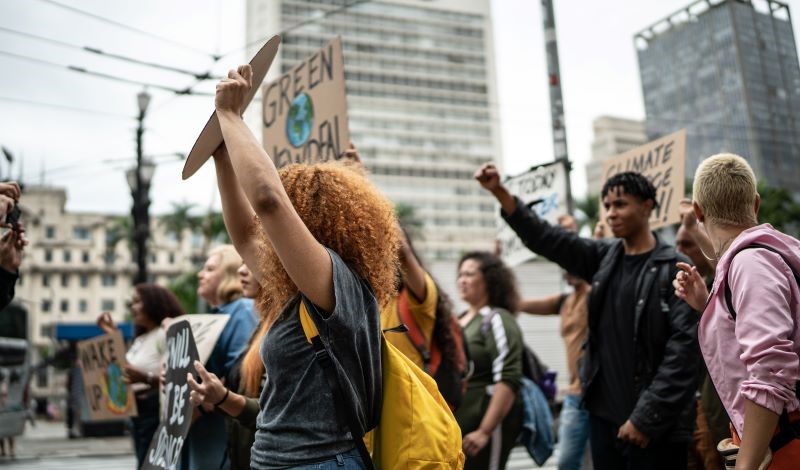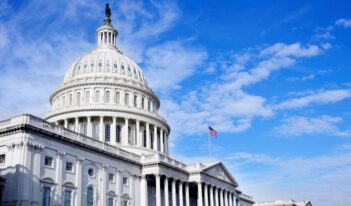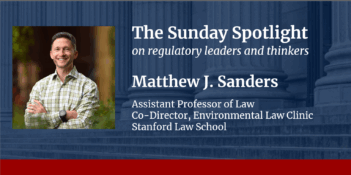
EPA’s attempts to reinterpret the Clean Air Act are detrimental to fighting climate change.
The Clean Air Act is the premier statute for the control of air pollution in the United States. The law instructs the U.S. Environmental Protection Agency (EPA) to identify and address air pollution that may endanger public health and welfare. This two-fold responsibility appears throughout the Act: Numerous statutory provisions require EPA first to decide whether “air pollution may reasonably be anticipated to endanger public health or welfare” and then to figure out how to regulate the sources of that air pollution. In a recent proposal to undo rules aimed at curbing the greenhouse gases emitted by power plants, however, the Trump Administration’s EPA ignores the overwhelming scientific evidence of the terrible effects of these pollutants on human health and welfare while arguing that the kind of regulation long required by the Clean Air Act is simply a bad idea.
This is not the first time that EPA has tried to avoid its regulatory responsibilities by declining to meet its scientific obligations. In 2003, EPA rejected a citizen petition demanding that the agency regulate greenhouse gas emissions from automobiles. At the time, EPA clearly did not want to use the Clean Air Act to address the pollution that causes climate change, but it also did not want to engage in a direct, public confrontation with the large body of scientific research drawing a strong link between greenhouse gases, climate change, and adverse effects on health and welfare. Thus, EPA embraced a legal strategy rather than a scientific theory: It offered a new interpretation of the Clean Air Act designed to allow the agency to escape an obligation to take on the air pollution that leads to climate change.
EPA’s legal strategy was, first, to claim that it had no authority to regulate greenhouse gases under the Clean Air Act because greenhouse gases were not “air pollutants” within the meaning of the Act. In addition, EPA declared that even if it had such authority, it would decline to regulate greenhouse gases due to its policy concerns about such regulation. EPA argued that regulation of greenhouse gases under the Clean Air Act would be ineffective in solving the global problem of climate change because it would not reduce other countries’ greenhouse gas emissions. The agency also argued that such regulation would be “inefficient” and “piecemeal.” EPA explained, moreover, that climate change was a complex problem, with complicated causal mechanisms that were imperfectly understood. It stressed that the Clean Air Act leaves a great deal to the “judgment” of the EPA Administrator.
In all of this, EPA not only refused to regulate greenhouse gases, but also failed to say, one way or another, whether greenhouse gases endangered public health or welfare.
In 2007, in Massachusetts v. EPA, the U.S. Supreme Court roundly rejected EPA’s decision to do nothing. It held that the Clean Air Act clearly included greenhouse gases within the category of air pollutants regulable under the Act. It scolded EPA for refusing even to form a judgment about the dangerousness of greenhouse gases based on policy concerns extraneous to the relevant provisions of the Clean Air Act. The Court also brushed aside the agency’s attempt to turn the spare textual allowance for the EPA Administrator’s “judgment” into what the Court called a “roving license to ignore the statutory text.”
Now comes EPA again, clutching the same script. This time, the agency’s mission—spurred on by President Donald J. Trump’s executive orders on energy, climate change, and regulation generally—is not to avoid regulation of greenhouse gases in the first place, but to destroy the rules that the agency has put in place, in the years since Massachusetts v. EPA, to address climate change. Rules to reduce greenhouse gas emissions from automobiles, trucks, power plants, and oil and gas production facilities are all in the Trump Administration’s EPA’s crosshairs. Just yesterday, EPA Administrator Lee Zeldin added another chapter to what he calls “the biggest deregulatory action in U.S. history” by proposing to rescind the 2009 finding that greenhouse gas emissions from automobiles endanger public health and welfare.
There will be much more to say in coming days about EPA’s proposal to rescind the 2009 endangerment finding for cars. Here, I want to focus on the first of EPA’s official proposals to undo a major climate-related regulation under the Clean Air Act: EPA’s regulations governing emissions of greenhouse gases from power plants that run on fossil fuels. These regulations were issued under section 111 of the Clean Air Act, which requires the EPA Administrator first to list, and then to regulate, a category of stationary sources of air pollution “if in his judgment it causes, or contributes significantly to, air pollution which may reasonably be anticipated to endanger public health or welfare.” The only difference between the quoted language and the automobile-related provision at the heart of Massachusetts is the word “significantly.”
EPA argues in its recent proposed rule that the single word “significantly” bears a world of anti-regulatory meaning. In EPA’s telling, “significantly” gives the agency the discretion to consider economic costs, regulatory effectiveness, and scientific complexity in deciding whether to list a category of stationary sources under section 111 of the Clean Air Act, and the word “judgment” bolsters the Administrator’s power to decline to regulate based on these concerns.
EPA’s legal theory for its deregulatory binge bears a strong resemblance to its failed arguments in Massachusetts v. EPA. Once again, EPA is smuggling myriad policy preferences into a provision that focuses on the scientific question of endangerment. Once again, EPA is doing so despite the fact that adjacent statutory provisions specifically instruct EPA to consider some of the concerns it mentions, but only in determining the scope of the regulation that occurs once endangerment is found, not in deciding whether there is endangerment. And once again, EPA is trying to avoid engagement with scientific evidence by throwing legal spaghetti at the wall and hoping something sticks.
In some ways, EPA’s legal position is even weaker than it was in 2003. This time around, EPA will have to defend in court the rescission of rules that were issued after public notice, comment, and reasoned explanation. This is a more challenging posture than defending the agency’s refusal, in 2003, to undertake a rulemaking proceeding in the first place: Reviewing courts tend to grant more leeway to agencies’ declinations to undertake rulemaking than to agencies’ reversals of existing rules.
EPA will also need to grapple with the fact that the Supreme Court has now, in its 2024 decision in Loper Bright Enterprises v. Raimondo, deprived agencies of the interpretive deference they enjoyed 20 years ago and installed courts as the arbiters of statutory meaning. In its proposal on power plants, EPA invites public comment on what Loper Bright means for its new interpretation of the Clean Air Act but does not otherwise opine on the implications of the case. For all that appears, the agency’s current leadership has no clue about what Loper Bright means for its preferred interpretation.
This is not to suggest that EPA’s proposed approach to gutting rules on climate change is doomed. No member of the majority in Massachusetts v. EPA still sits on the Supreme Court. Much more conservative and assertive justices have joined the Court, and the Court has become notably hostile to ambitious regulatory actions. The kind of analysis offered here, moreover—focused on statutory meaning and judicial precedent—may not meet the present moment, in which fluctuating, arbitrary, and even cruel presidential preferences are blessed without full briefing, argument, or written opinions.




